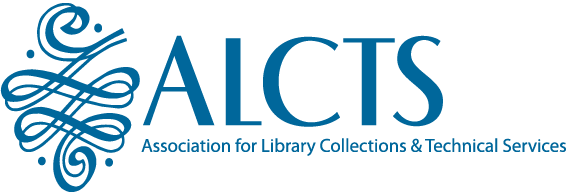Collection Management and Development Section Restructuring
July 2010
After a year of discussion on several draft reorganization plans, the Collection Management and Development Section (CMDS) Executive Committee approved changes in the section’s organization at Annual 2010. Many section members had questions about the impact of these changes on committees and committee appointments. Compare old and new committees and interest groups side-by-side.
Q: What’s the section’s name now?
A: Collection Management Section (CMS). Our mission is: to provide a forum for members whose interests pertain to managing collections including establishing policies and procedures, budgeting, selecting and evaluating resources, and strategic planning in all types of libraries.
Q: When do the changes become effective?
A: The changes become effective July 1, 2011. We consider 2010-2011 a transition year.
Q: When will ALA databases, web pages, and publications be updated to reflect the reorganization and section name change?
A: Based on PARS experience, it may be a couple of years before all ALA databases, web pages, and publications are updated.
Q: Which committees are becoming interest groups (IGs)?
A: The transitioning committees are:
- Administration of Collection Development
- Collection Evaluation & Assessment
- Collection Management & Electronic Resources
Q: I’ve just accepted a two-year appointment to a committee that’s transitioning to an IG. What happens to my appointment?
A: This makes you a transition-committee member. Transition-committee members with appointments for 2010–2012 will be appointed to a New Interest Group Steering Committee. This ad hoc committee will be charged with managing the transition of the three standing committees to interest groups. Section chair Ginger Williams will send appointment letters by Midwinter 2011 so you’ll have an appointment until June 30, 2012.
For Midwinter and Annual 2011, members of the New Interest Group Steering Committee should plan to attend the CMS All-Committee meeting and meet with the committee to which they were originally appointed. For Midwinter and Annual 2012, they should plan to meet with the appropriate interest group. Ginger will appoint a Steering Committee chair who will report to the Executive Committee.
Q: What is the benefit of changing from a committee to an IG?
A: Interest groups have more flexibility than committees. Committee members and chairs are appointed by the section vice-chair and have limited membership, while IGs are open to anyone who wishes to participate. IGs elect their own chair. Committees meet during the section all-committee meeting, while IGs are scheduled for a separate two-hour meeting time. If a committee wants to do programming at conference, it must either submit a program proposal to the division Program Committee or use the section’s forum time.
Program proposals must be submitted twelve months in advance, which makes it difficult to address hot topics quickly. The section has only one forum slot per ALA Meeting. The Annual slot is reserved for topics on emerging research, so committees must compete for the Midwinter forum slot. An IG can use its two-hour meeting time for programming and can announce the topic just weeks before conference. IGs are also welcome to propose other projects; for example, an IG could propose a webinar to ALCTS Continuing Education or arrange to do a series of posts on the collection management blog (currently in the proposal stage).
Q: What does my committee need to do to transition to an IG?
A: While the restructuring plan includes interest group names and charges/missions, the section Executive Committee actually can’t create an IG. IGs are created by a member submitting a petition with at least ten member signatures to the ALCTS Organization & Bylaws Committee. The transitioning committees need to organize petitions, obtain signatures, select a chair for 2011–2012, decide if the IG should have a vice-chair and select one. The restructuring plan’s IG names and charges are suggestions, but the group forming the IG does not have to follow them. John Wiggins, the new CMS Representative on ALCTS Organization & Bylaws, will be helping us with procedural matters.
Q: How does the section Planning Committee’s new charge affect committee and IG chairs?
A: While IGs offer more flexibility than committees, they are also harder to track. The Planning Committee is being charged “to compile a semiannual update of goals and accomplishments of committees and interest groups” and “review committees and interest groups on a regular cycle.” The Executive Committee wants to know three things about each IG:
- the chair’s name,
- projects/programs planned, and
- projects/programs completed.
During this transition year, the Planning Committee will be figuring out the best way to compile a short report without creating extra work for all the members who volunteer to chair groups.
Q: If I have other questions, who do I ask?
A: Ask your committee or IG chair first. If you still have questions, please email:
- Ginger Williams, CMS Chair, ginger.williams@wichita.edu
- Harriet Lightman, CMS Vice-Chair/Chair-Elect, h-lightman@northwestern.edu
- Kathy Tezla, CMS Past Chair, ktezla@carleton.edu
- John Wiggins, CMS Representative to ALCTS Organization and Bylaws, jww27@drexel.edu
Or you can always contact Charles Wilt cwilt@ala.org at the ALCTS office with questions or concerns.
